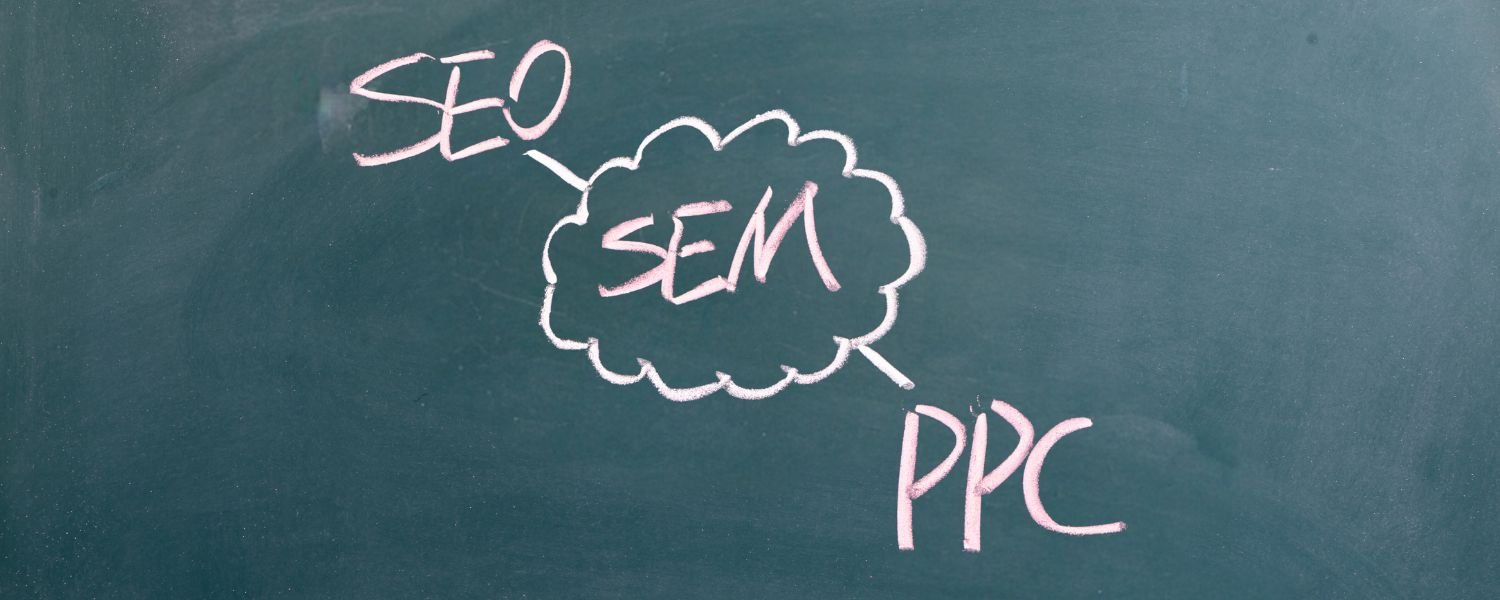Understanding the Types of Digital Advertising Explained
In today’s digital era, understanding the types of digital advertising with examples is essential for businesses looking to navigate the complex online landscape.
Digital advertising has transformed how brands connect with their audience, offering a plethora of formats and strategies to achieve marketing objectives. From display advertising to search engine marketing (SEM), social media advertising, video advertising, native advertising, and email marketing, the digital ads marketing realm is vast and varied.
Each type presents unique advantages of digital advertising, such as targeted reach, brand awareness, and measurable results. However, it’s crucial to discern digital advertising vs digital marketing; the former focuses on leveraging paid channels to promote a brand, while the latter encompasses an overarching strategy inclusive of both paid and organic efforts.
This blog aims to demystify these concepts, providing a comprehensive overview of the four types of digital advertising and beyond, enhancing one’s understanding of digital advertising examples and their role in a successful online presence.
Display Advertising

Display Advertising, a pivotal component of digital marketing, leverages various digital platforms to showcase branded visuals to a wide audience. It encompasses several types, including static, flash, and video ads, which can be integrated across websites, social media, and apps.
Digital advertising offers multifaceted advantages, contrasting with traditional marketing methods, such as cost efficiency, extensive reach, and the ability to measure impact effectively.
Digital advertising and digital marketing, though closely related, serve different purposes. While digital marketing is an overarching strategy that includes various online marketing tactics, digital advertising refers explicitly to the paid efforts to promote a brand or product online. This distinction is crucial for businesses strategizing their online presence.
Moreover, digital ad marketing strategies are increasingly sophisticated, utilizing advanced targeting and analytics to optimize ad performance. This approach ensures that digital ads are seen and resonate with the intended audience, enhancing the effectiveness of digital advertising campaigns.
A. Examples and Formats
Display advertising unfolds in various formats, each with unique features and use cases, showcasing the diversity within digital advertising examples:
1. Banners
These are the most recognizable format, often found at the top or sides of web pages. Banner ads are image-based and can range from simple static images to more dynamic and interactive ones, encapsulating the essence of digital ads marketing.
2. Pop-ups
These ads temporarily overlay part of a webpage, demanding immediate attention from users. Pop-ups can be effective but are sometimes viewed as intrusive, highlighting the delicate balance in digital advertising examples.
3. Interstitial Ads
Full-page ads that appear before a user reaches their intended webpage content. These are commonly used in mobile apps and offer a high engagement rate due to their prominent placement.
These examples underscore the versatility and innovation inherent in different types of digital advertising, illustrating how advertisers can creatively engage their audience across different digital landscapes.
B. Pros and Cons
Pros
1. Targeted Reach
Display advertising excels in targeting capabilities, enabling advertisers to reach specific demographics and enhancing the advantages of digital advertising.
2. Brand Awareness
Due to their visual appeal, display ads significantly boost brand visibility and recognition, a key advantage of digital advertising.
3. Measurable Results
Display advertising provides tangible metrics such as click-through rates and impressions, offering insights into campaign performance, a hallmark of digital ads marketing.
Cons
1. Ad Blindness
Frequent exposure to ads can lead to users subconsciously ignoring them, a challenge in digital advertising examples.
2. Intrusiveness
Formats like pop-ups can be seen as intrusive, potentially harming the user experience and brand perception, a critical consideration in digital advertising vs digital marketing.
3. Ad-Blocking Software
The rise of ad-blocking tools can significantly reduce the visibility of display ads, posing a hurdle in maximizing the advantages of digital advertising.
Search Engine Marketing (SEM)

Search Engine Marketing (SEM) encompasses various types of digital advertising to enhance visibility and engagement with targeted audiences online. Among the four types of digital advertising are display ads, social media ads, native advertising, and search (PPC/SEO) ads.
Each offers unique advantages of digital advertising, such as increased brand awareness and targeted reach. For instance, digital display advertising leverages visuals like banners and videos across websites and platforms, serving as effective digital advertising examples.
On the other hand, digital ad marketing through social media taps into specific user demographics for personalized engagement. The distinction between digital advertising and digital marketing lies in advertising’s focus on direct promotion, while marketing encompasses broader strategies, including content and relationship building.
Components: SEO vs. PPC

SEM consists of two main components: Search Engine Optimization (SEO) and Pay-Per-Click (PPC) advertising, each serving a unique role within the framework of digital advertising examples.
1. SEO
This organic component of SEM focuses on optimizing website content and structure to improve rankings in search engine results pages (SERPs).
The goal is to enhance the visibility of a site without direct payment to search engines, leveraging the advantages of digital advertising like increased credibility and long-term audience engagement.
2. PPC
In contrast, PPC is a paid component of SEM where advertisers pay a fee each time one of their ads is clicked. This approach allows for immediate visibility in SERPs and is a direct method within the types of digital advertising with examples, offering quick results and precise targeting options.
Social Media Advertising

Social media platforms are dynamic digital arenas where people connect, share, and engage with content and each other. They have become pivotal in digital advertising, acting as channels for brands to effectively reach and interact with their target audience.
Each platform, be it Facebook, Instagram, Twitter, LinkedIn, or TikTok, caters to different demographics and interests, making it crucial for advertisers to choose the right platform based on their campaign goals and target audience.
A. Ad Formats
Social media advertising encompasses various ad formats, each with unique features and benefits, thereby contributing to the diverse types of digital advertising with examples found across platforms:
1. Sponsored Posts
These appear directly in a user’s newsfeed, blending in with organic content, making them less intrusive. An example includes Instagram sponsored posts that look like regular posts but are tagged with a “Sponsored” label.
2. Carousel Ads
These ads allow multiple images or videos in a single ad, each with its link. Carousel ads are perfect for showcasing a product’s different features or telling a brand story sequentially.
3. Stories Ads
Full-screen ads between users’ Stories on platforms like Instagram and Snapchat. They offer a rich, immersive experience, especially effective for short-term promotions.
4. Video Ads
With the growing preference for video content, video ads are increasingly popular across platforms, offering engaging ways to showcase products or services.
5. In-Feed Ads
Similar to sponsored posts, these ads appear in the natural flow of the platform’s content feed, such as Facebook’s in-feed ads.
These ad formats leverage the advantages of digital advertising by offering versatility, engagement, and creative expression, allowing brands to craft compelling narratives that resonate with their audience.
Targeting Options and Audience Engagement

One of social media advertising’s key strengths is its robust targeting options. Advertisers can segment audiences based on demographics, interests, behaviors, and more, ensuring their message reaches the most relevant users. This precision targeting is a hallmark of digital ad marketing, distinguishing it from traditional advertising methods.
Platforms like Facebook and LinkedIn offer detailed targeting options, including location, age, gender, job titles, and even life events, enabling advertisers to tailor their messages precisely.
Additionally, retargeting allows brands to reach users who have previously interacted with their website or app, enhancing the chances of conversion.
Engagement is another critical factor in social media advertising. Platforms provide interactive features like polls, swipe-up links, and call-to-action buttons, making ads more than just a visual experience but a doorway to interaction.
This interactivity boosts user engagement and can lead to higher conversion rates, showcasing the advantages of digital advertising in fostering two-way communication between brands and consumers.
Video Advertising

Video advertising is a powerful component within the digital ad marketing landscape, effectively harnessing both visual and auditory stimuli to engage audiences. This form of advertising has been particularly transformative, offering a dynamic and immersive experience that traditional mediums struggle to match.
1. Rise of Video Content Consumption
The rise of video content consumption marks a significant shift in the digital landscape, underscoring the importance of video advertising as a cornerstone of digital ad marketing strategies.
With the proliferation of high-speed internet and advanced mobile devices, consumers increasingly gravitate towards video content for entertainment, education, and information.
This trend is not just a reflection of consumer preferences but also highlights the advantages of digital advertising, particularly in engaging and retaining audience attention.
As one of the types of digital advertising with examples, video advertising leverages the dynamic and immersive nature of video content to deliver impactful messages, making it a critical tool in the arsenal of digital advertising vs. digital marketing.
2. Platforms and Formats
When discussing types of digital advertising with examples, it’s essential to explore the various platforms and formats that video advertising encompasses. YouTube ads stand out as a prime example, offering a range of options from skippable and non-skippable in-stream ads to bumper ads and sponsored cards.
These formats cater to diverse marketing objectives and audience behaviors, making YouTube a pivotal platform in digital ad marketing.
Beyond YouTube, other social media platforms like Facebook, Instagram, and Twitter offer robust video advertising options, including in-stream ads, stories, and promoted posts. Each platform and format presents unique opportunities and challenges, necessitating a strategic approach to maximize the advantages of digital advertising.
3. Best Practices for Creating Effective Video Ads
Creating compelling video ads is both an art and a science, blending creative storytelling with strategic marketing insights. Among the best practices, the foremost is understanding your audience and tailoring your content to resonate with their interests and needs. This involves crafting compelling narratives and incorporating elements that trigger emotional engagement and recall.
Another critical practice is optimizing for mobile devices, given the significant portion of video content consumed. This means ensuring that your video ads are formatted correctly, load quickly, and engage even without sound.
Native Advertising

Native advertising is a subtle and seamless method of digital ad marketing that integrates promotional content into a platform in a way that doesn’t disrupt the user’s experience. Unlike traditional forms of digital advertising, native ads blend in, mimicking the look, feel, and function of the media format in which they appear. This integration is a strategic approach within the broader scope of types of digital advertising with examples, aiming to provide value through relevant and exciting content to the audience.
A. Examples and Benefits
One typical example of native advertising is sponsored content on news websites, where articles or videos are produced by or for a sponsor but are presented in the same format as editorial content. This is a prime illustration of the four types of digital advertising, with native ads being a key category alongside display ads, social media ads, and search engine marketing.
There are numerous advantages to digital advertising, mainly through native ads. Native advertising can increase engagement rates since the content is more relevant and less intrusive. For instance, a native ad for a new smartphone might appear as a tech blog’s review, seamlessly fitting into the site’s regular content.
This relevance boosts the likelihood of audience engagement, providing a win-win situation for both advertisers and consumers.
B. Challenges and Ethical Considerations
Despite its benefits, native advertising poses unique challenges and ethical considerations. The primary concern lies in the blurred lines between content and advertisement, which could potentially mislead the audience if not clearly labeled.
This concern highlights the thin line between digital advertising and digital marketing, where the former focuses on the promotional aspect and the latter encompasses a broader strategy, including customer engagement and branding.
Transparency is key to navigating these challenges. Advertisers and platforms must ensure that native ads are marked as such, maintaining the trust of their audience. Ethical native advertising respects the audience’s ability to make informed decisions about what content they choose to engage with.
Email Marketing

Email marketing remains a pivotal component of digital advertising, serving as an intimate and direct channel to communicate with customers. It intertwines seamlessly with various types of digital advertising to enhance brand visibility, engagement, and conversions. Let’s delve into its role, email ad types, and strategies for executing effective email campaigns.
A. Role of Email in Digital Advertising
Email marketing is a quintessential element of digital ads marketing, offering a personalized touch that many other digital platforms struggle to match. Unlike broader digital advertising strategies, email allows for targeted messaging directly to a customer’s inbox, making it a powerful tool for nurturing leads and maintaining customer loyalty. Its effectiveness is evident in its ability to deliver tailored content that resonates with the recipient, thereby increasing the likelihood of engagement and conversion.
In the landscape of digital advertising vs digital marketing, email marketing comfortably straddles the line between the two, facilitating the promotion of products and services and the cultivation of brand relationships. This unique positioning underscores the advantages of digital advertising through email, including cost-effectiveness, measurable ROI, and direct customer engagement.
B. Types of Email Ads
Email advertising manifests in various formats, each serving distinct purposes within a digital marketing strategy:
1. Newsletters
Regular dispatches provide valuable content, industry news, and company updates. They keep the audience engaged and informed, helping to build a community around the brand.
2. Promotional Emails
Focused on driving sales and conversions, these emails spotlight specific products, services, or offers. They’re often time-sensitive, leveraging urgency to encourage immediate action.
3. Transactional Emails
These include order confirmations, receipts, and shipping notifications. Though primarily informational, they offer an opportunity to upsell or cross-sell related products.
4. Welcome Emails
The first touchpoint in the email marketing journey is introducing new subscribers to the brand and setting the tone for future communications.
5. Re-engagement Emails
Aimed at rekindling interest among inactive subscribers, these emails often include special offers or updates to draw people back.
Each type contributes uniquely to the broader spectrum of digital advertising, with examples illustrating the versatility and adaptability of email as a medium.
C. Strategies for Effective Email Campaigns
To maximize the impact of email marketing within the realm of digital advertising examples, consider the following strategies:
1. Segmentation
Tailor your emails to different segments of your audience based on demographics, purchase history, or engagement level. This personalization enhances relevance and response rates.
2. A/B Testing
Experiment with different subject lines, email content, and call-to-action (CTA) placements to understand what resonates best with your audience.
3. Mobile Optimization
A significant portion of emails are opened on mobile devices, so ensure your email design is responsive and user-friendly across all screen sizes.
4. Engaging Content
Beyond promotional material, include content that educates, entertains, or adds value to your audience’s life. This could be tips, industry insights, or user-generated content.
5. Clear CTAs
Make it easy for recipients to understand what action you want them to take, whether purchasing, reading a blog post, or signing up for an event.
6. Analytics and Feedback
Leverage email marketing tools to track open rates, click-through rates, conversion rates, and more. Use this data to refine and optimize future campaigns.
Influencer Marketing

In the evolving landscape of digital advertising, influencer marketing has emerged as a pivotal strategy, blending traditional endorsements’ persuasive power with digital platforms’ interactive capabilities. This approach leverages the credibility and reach of influencers across various niches to foster brand awareness and engagement.
Let’s delve into the emergence of influencer culture, the diverse types of influencers and partnerships, and the critical aspect of measuring ROI in this digital marketing paradigm.
A. Emergence of Influencer Culture
The dawn of influencer culture can be attributed to the exponential growth of social media platforms, transforming ordinary users into content creators with significant followings. These digital arenas serve as the perfect backdrop for various types of digital advertising, where influencers embody the role of brand ambassadors.
The advantages of digital advertising are manifold, offering brands the agility to adapt and the capacity to reach targeted demographics more effectively than traditional media. Influencer marketing, a subset of digital advertising vs. digital marketing, emphasizes direct engagement and authenticity, resonating well with the digital-native audience.
B. Types of Influencers and Partnerships
Influencers are often categorized based on their follower count, expertise, and niche, leading to a spectrum that includes mega, macro, micro, and nano-influencers. Each category offers distinct digital advertising examples, from high-profile celebrity endorsements to niche-focused content creators who engage deeply with specific communities.
1. Mega-Influencers
Their massive followings offer extensive reach, making them ideal for broad-based brand awareness campaigns.
2. Macro-Influencers
Professionals or rising stars in specific fields strike a balance between reach and relevance.
3. Micro-Influencers
Known for their higher engagement rates, they offer authenticity and niche expertise.
4. Nano-Influencers
Although they have smaller followings, their influence is powerful within tight-knit communities.
Partnerships can range from sponsored content and product placements to affiliate marketing and brand ambassadorships, each testament to the versatility of digital ad marketing.
C. Measurement and ROI
The accurate measure of influencer marketing’s effectiveness lies in its ROI, which hinges on meticulously defined metrics and KPIs.
Unlike traditional types of digital advertising with examples where metrics might be more straightforward, influencer marketing demands a nuanced approach to measurement.
Engagement rates, conversion metrics, and brand sentiment analyses are critical in assessing the impact of influencer campaigns.
Digital advertising examples within influencer marketing showcase innovative tracking techniques, such as unique promo codes and affiliate links, enabling brands to correlate influencer efforts with sales conversions directly.
Moreover, advanced analytics platforms now offer insights into quantitative and qualitative measures of success, highlighting the advantages of digital advertising in providing multifaceted perspectives on campaign performance.
Programmatic Advertising

Programmatic Advertising represents a significant evolution in the realm of digital ads marketing, streamlining the process of buying and selling ad inventory through automated systems and algorithms. This approach to digital advertising offers precision and efficiency, transforming traditional ad placement methods.
A. Definition and Automation Process
At its core, Programmatic Advertising involves the automated buying and selling of online advertising space. This method utilizes data insights and algorithms to serve ads to the right user, at the right time, in the right context, making it a powerful component of digital advertising vs digital marketing strategies.
Unlike traditional methods, which involve requests for proposals (RFPs), negotiations, and manual insertion orders, programmatic advertising automates these processes, making transactions efficient and streamlined.
The automation process begins with advertisers defining their target audience, budget, and campaign goals. Ad inventory is then purchased through a programmatic platform such as a Demand-Side Platform (DSP), which connects to various ad exchanges and Supply-Side Platforms (SSPs) where publishers offer their ad spaces.
The DSP evaluates available inventory and places bids in real-time, based on the advertiser’s specified criteria, ensuring that ads are delivered to the intended audience with minimal human intervention.
B. Targeting Options and Real-Time Bidding
Programmatic advertising provides many targeting options, enabling advertisers to reach their audience more precisely than ever. This includes demographic, behavioral, geographic, and contextual targeting, among others.
For example, in the realm of types of digital advertising with examples, an e-commerce brand can target users who have previously visited their site but did not make a purchase, a method known as retargeting.
Real-time bidding (RTB) is a key feature of programmatic advertising, allowing advertisers to bid on ad inventory in milliseconds as a webpage load. This ensures that ads are shown to users who are most likely to be interested in the product or service based on the collected data.
RTB exemplifies the efficiency and effectiveness of programmatic advertising, as it operates within the framework of the four types of digital advertising: display, video, mobile, and social media.
C. Advantages and Challenges
One of the primary advantages of digital advertising through programmatic channels is its ability to maximize ROI. By targeting specific audiences and using data-driven insights, advertisers can ensure their ads are more relevant, leading to higher engagement rates and conversions.
Moreover, the automation of ad-buying processes saves time and resources, allowing for a more efficient allocation of marketing budgets.
However, programmatic advertising is not without its challenges. Concerns about privacy and data security have risen, given the extensive use of personal data.
Ad fraud is another significant challenge, where fraudulent websites and bots can skew metrics and deplete ad budgets. Ensuring transparency and trust in the programmatic ecosystem is crucial for advertisers and publishers alike.
Conclusion
Navigating the multifaceted world of digital ad marketing requires a deep understanding of the various types of digital advertising with examples. From the immersive experience of video advertising to the personalized touch of email marketing, each method offers distinct advantages to digital advertising.
The key to maximizing these benefits lies in strategically integrating these types into a cohesive digital advertising vs digital marketing strategy, ensuring that each campaign is tailored to meet specific business goals and audience needs.
Moreover, recognizing the dynamic nature of digital platforms and evolving consumer behaviors is crucial for staying relevant and effective in this domain. As we’ve explored the spectrum from display advertising to programmatic advertising, it’s evident that the future of digital marketing is rich with opportunities for innovation, engagement, and growth.
By leveraging these insights and examples, businesses can craft compelling narratives that resonate with their audience, fostering brand loyalty and driving success in the digital age.

